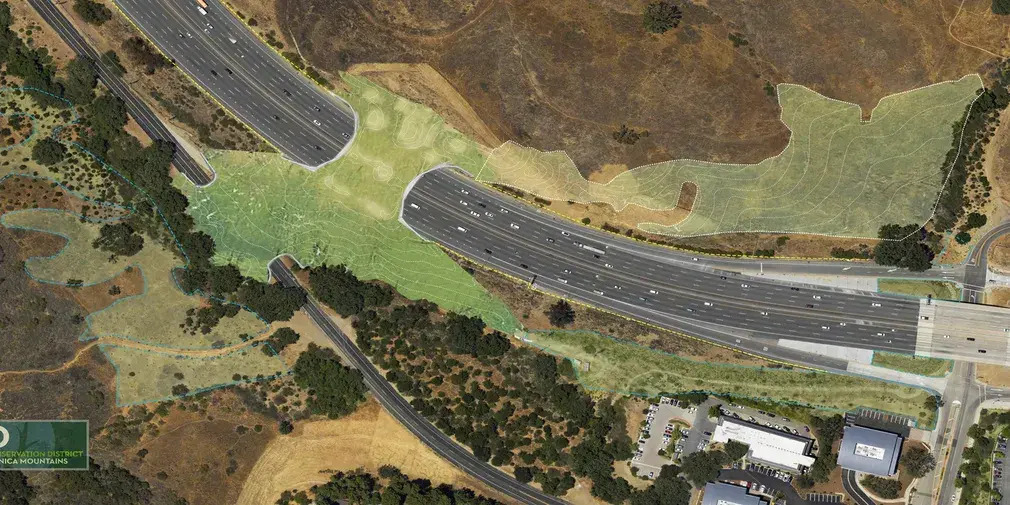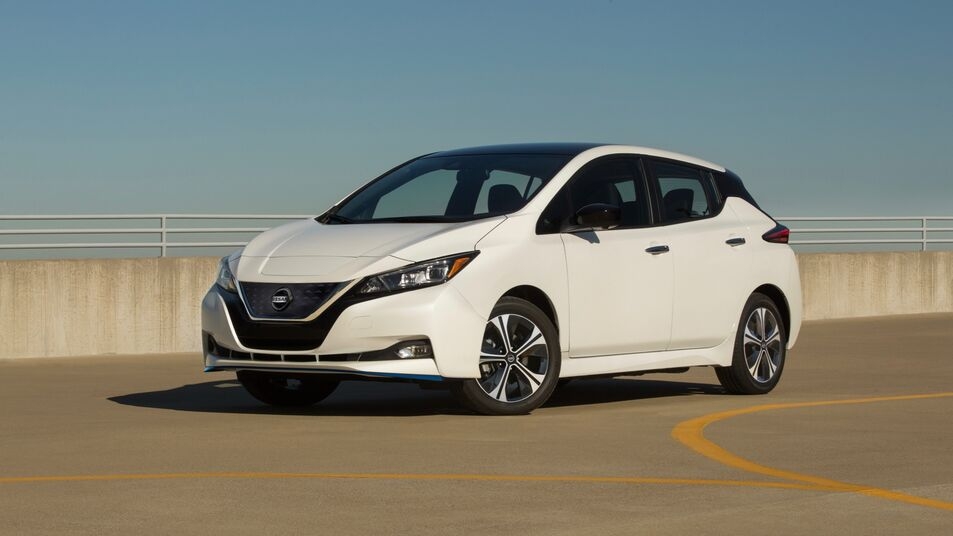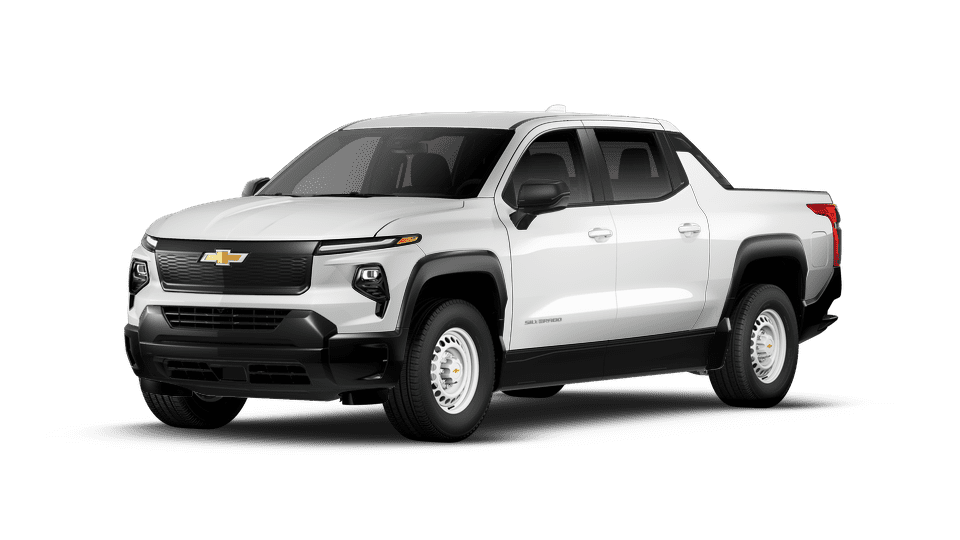California’s 101 Freeway does more than carry traffic. It slices through entire ecosystems. More than 300,000 vehicles push through this corridor daily—commuters, tourists, delivery trucks, semis. The road is a lifeline for Southern California’s economy. But for wildlife, it’s been a death trap.
For years, animals trying to cross the Santa Monica Mountains had to brave ten lanes of fast-moving traffic. Most didn’t survive. Mountain lions, deer, coyotes, snakes, frogs—struck and killed while simply trying to reach food, mates, or shelter. The freeway became a wall. A steel-and-asphalt boundary that trapped generations of animals on shrinking patches of land.
That wall is about to get a door. And not just any door—a globally unprecedented one. The Wallis Annenberg Wildlife Crossing is nearing completion, and when it opens in 2025, it will be the largest and most advanced wildlife bridge in the world. Designed to blend into the terrain and serve as an extension of the mountains themselves, it promises something that’s been missing from roadbuilding for generations: reconnection.
A Natural Bridge, Not Just a Structure
Most people, when they hear the term “wildlife crossing,” imagine a basic overpass with a few shrubs and maybe a fence. This is nothing like that.
The Wallis Annenberg Wildlife Crossing has been designed from the ground up to look, feel, and function like part of the ecosystem. It’s not a concrete platform. It’s a sculpted, multi-layered piece of terrain, covered in native plants, shaped with curved berms, and insulated with sound barriers that mute the constant roar of freeway traffic below.
Animals using the crossing won’t realize they’ve stepped onto anything man-made. That’s intentional. For species like mountain lions, coyotes, and mule deer, unfamiliar smells or unnatural surfaces can trigger avoidance. Engineers and biologists worked together for years to create a passage that mimics the natural habitat in every possible way, including soil composition, plant cover, moisture retention, and shade.
Underneath, ten lanes of cars will continue roaring past as always. But overhead, nature will reclaim lost ground.
The Mountain Lions at the Center of It All
The need for this project didn’t come from one incident—it came from a decade of mounting research and one unforgettable story.
In the early 2010s, a single mountain lion—eventually known as P-22—made an astonishing journey. He somehow managed to cross both the 405 and 101 Freeways, two of the most dangerous roadways in the country, and wound up living in Griffith Park in Los Angeles.
He became a symbol. A ghost cat in the city. A solitary survivor surrounded by houses, roads, and humans.
But P-22 was a warning, not just a marvel. Biologists asked: How many animals tried to make that journey and died? How many didn’t reach the other side? What happens when an apex predator can’t leave its island of land, can’t find new mates, and can’t roam as it’s evolved to?
The answers were dire.
Studies showed the mountain lion population in the Santa Monica Mountains was genetically collapsing. Inbreeding was rampant. Birth defects were rising. Roadkill was a leading cause of death. If nothing changed, extinction wasn’t just possible—it was inevitable. Some models showed the population vanishing within 25 to 50 years.
This crossing is the most urgent piece of conservation infrastructure in California’s recent history. And it may well be the difference between survival and extinction for these animals.
More Than Just Big Cats: A Full Ecosystem Reconnects
It’s easy to focus on mountain lions, but the truth is this bridge isn’t just for them. It’s for every level of the ecosystem.
- Rabbits and hares, vital prey species, will be able to safely migrate again.
- Bobcats, often struck while hunting at night, can now traverse the mountains more safely.
- Lizards, toads, and frogs, especially sensitive to habitat fragmentation, gain access to new pools and shaded terrain.
- Birds and insects, whose travel routes are often defined by plant continuity, will benefit from the bridge’s native flora.
By restoring connectivity across the freeway, this bridge doesn’t just move animals—it reactivates entire food chains.
Many people underestimate just how devastating fragmentation is. When animals can’t move, ecosystems become brittle. Water distribution changes. Predator-prey balances collapse. Disease spreads faster. Isolated populations weaken.
This bridge fixes that by restoring the flow of life between the northern and southern Santa Monica ranges.
Why This Crossing Is Unlike Anything Else on Earth
There are wildlife overpasses in Canada, in Europe, and in a few progressive U.S. states. But none of them match what’s being done in California right now.
This is:
- 210 feet long, enough to clear every single lane of the 101.
- 165 feet wide, wide enough to host real vegetation, not just token landscaping.
- Built entirely with native California plants, including drought-resistant species and natural grasses.
- Designed with multi-species corridors, offering different types of terrain for different animals.
- Elevated and shielded from headlights, noise, and pollution using acoustic barriers.
When it opens, it will not only be the largest wildlife bridge by physical dimensions—it will be the most ambitious in terms of ecological integration.
From a drone, it will look like an uninterrupted ridge in the mountains. From a bird’s eye, it will disappear into the landscape. From the ground, it will seem like an ordinary slope of forest.
That’s the highest praise a project like this can get.
How a $90 Million Dream Became Reality
Bridges like this don’t just appear. They are fought for.
The idea of reconnecting the habitat had been circulating for years. Biologists at the National Park Service had flagged the crisis. Local activists were pushing hard. But the money? That was the real mountain to climb.
It took more than a decade of fundraising, lobbying, and collaboration to get it off the ground.
- The Annenberg Foundation donated a large initial sum.
- Caltrans committed state resources and helped align engineering with wildlife needs.
- Private donors—everyone from Silicon Valley philanthropists to Hollywood celebrities—chipped in.
- Local residents held events, fundraisers, and school campaigns.
- Kids sold lemonade and donated the proceeds.
- Schools across California taught students about the project, turning awareness into action.
By the time they broke ground, they had raised nearly $90 million. That level of public support speaks volumes about where we are as a society—and where we might be headed.
Why Drivers Should Care
You don’t need to care about wildlife to support this. You just need to care about your own safety.
In the United States, over 1 million animal-vehicle collisions are reported every year. These crashes result in:
- 200 human deaths
- 26,000 serious injuries
- Over $8 billion in damages annually
Anyone who’s ever had a deer jump out in front of their car at night knows how terrifying—and dangerous—these encounters are. It’s not just rural highways, either. Suburban sprawl has brought wildlife into closer contact with human development than ever before.
This bridge dramatically reduces the chances of fatal encounters. Fewer dead animals. Fewer crashed cars. Fewer people traumatized by hitting a living creature at 70 mph.
And it makes traffic smoother. Roadkill causes delays. Swerving to avoid an animal can trigger multi-car pileups. This project solves multiple problems at once—most of which drivers never even realize they face.
This is not a feel-good pet project. It’s functional, future-proof road safety.
The Bigger Shift: What This Bridge Signals
This crossing is a bridge in more ways than one. It’s a connection between habitats, sure—but also a connection between two different eras of thinking.
We used to build roads with one goal: get cars from A to B as fast as possible. Everything else was secondary. If a freeway cut through a forest, so be it. If animals died, that was collateral damage.
That mindset is no longer sustainable. Climate change, population growth, and urban development demand smarter infrastructure.
Projects like this show that we can build smarter, not just faster. That roads can coexist with wilderness. That our species doesn’t have to dominate the landscape—we can share it.
It’s not about going backward. It’s about going forward with awareness.
What We Think
At BidForAutos.com, we write about cars, driving, and everything that moves on four wheels—from EVs and hybrids to performance models and pickups. But every now and then, a project comes along that reminds us how much driving depends on what’s around the road, not just what’s on it.
The Wallis Annenberg Wildlife Crossing isn’t just a win for mountain lions. It’s a win for anyone who’s ever slammed on the brakes to avoid a deer. It’s a win for people who believe we can build with purpose, not just profit. And it’s a win for drivers who want less chaos, less danger, and more connection to the places they pass through.
It took too long. It cost a lot. But it shows we’re capable of better. Smarter infrastructure. Safer highways. And a deeper understanding of the fact that we’re not the only species trying to get from point A to point B.
If this is what the future of transportation looks like—built to protect life, not just move through it—we’re all in.
Stick with BidForAutos.com for more stories where driving meets real progress.







